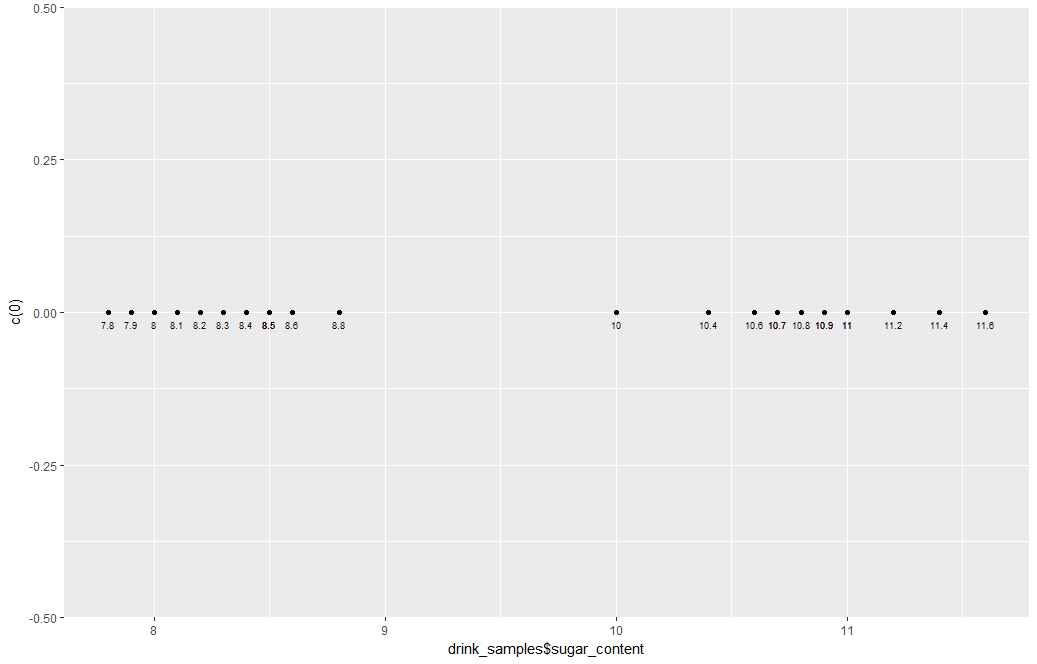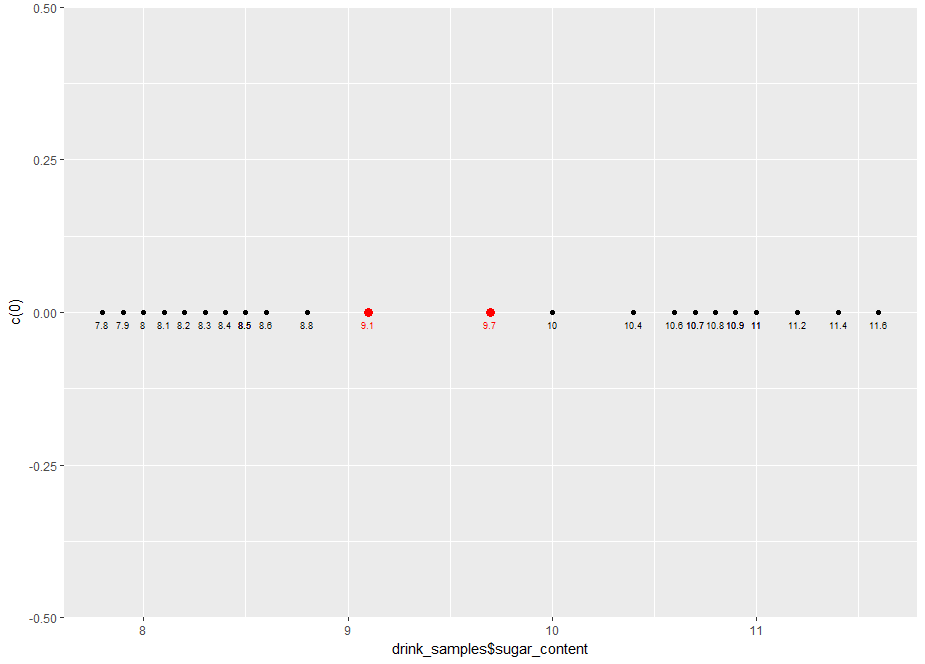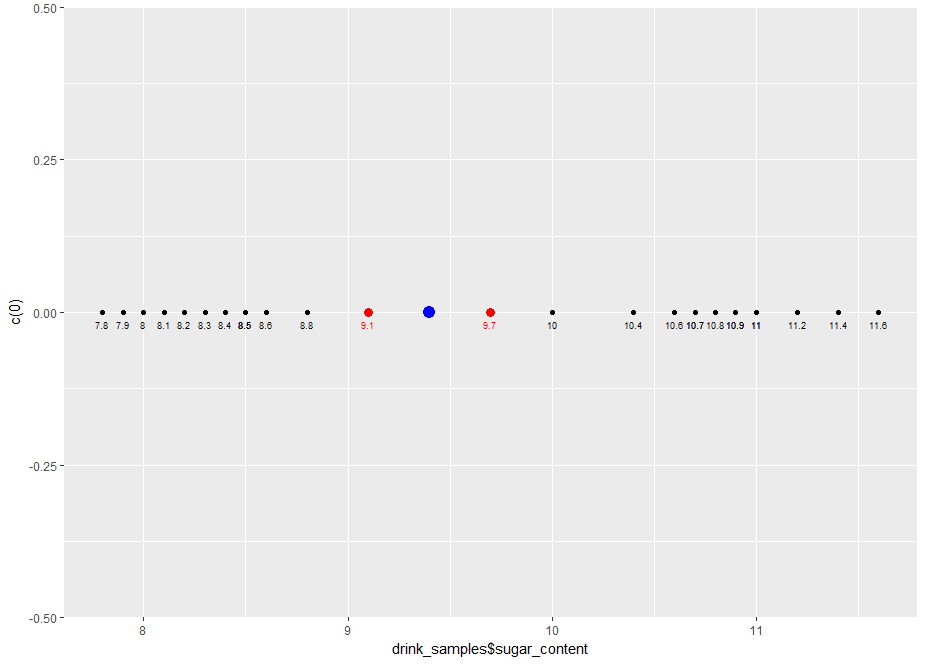Introduction
Support Vector Machines in R

Kailash Awati
Instructor
Preliminaries
- Objective: gain understanding of how SVMs work; options available in the algorithm and situations in which they work best.
- Prerequisites: Intermediate knowledge of R; basic visualization using
ggplot(). - Approach: Start with 1-dimensional example and gradually move on to more complex examples.
Sugar content of soft drinks
- Soft drink manufacturer has two versions of flagship brand:
- Choke - sugar content 11g/ 100 ml.
- Choke-R - sugar content 8 g/ 100 ml.
- Actual sugar content varies in practice.
- Given 25 samples chosen randomly, find a decision rule to determine brand.
- First step: visualize data!
Sugar content of soft drinks - visualization code
- Data in
drink_samplesdataframe.
# Specify dataframe, set plot aesthetics in geom_point (note y = 0) p <- ggplot(drink_samples) + geom_point(aes(sugar_content, 0))# Label each point with sugar content value, adjust text size and location p <- p + geom_text(aes(sugar_content, 0, label = sugar_content), size = 2.5, vjust = 2, hjust = 0.5) # Display plot p

Decision boundaries
- Let's pick two points in the interval as candidate boundaries:
- 9.1 g/100 ml
- 9.7 g/100 ml
- Classification (decision) rules:
- if (y < 9.1) then "Choke-R" else "Choke"
- if (y < 9.7) then "Choke-R" else "Choke"
- Let's visualize them on the plot shown on the previous slide.
Decision boundaries - visualization code
- Create a dataframe containing the two decision boundaries.
# Define data frame containing decision boundaries
d_bounds <- data.frame(sep = c(9.1, 9.7))
Decision boundaries - visualization code
- Add to plot using
geom_point()
# Add decision boundaries to previous plot
p <- p +
geom_point(data = d_bounds,
aes(sep, 0),
color = "red",
size = 3) +
geom_text(data = d_bounds,
aes(sep, 0, label = sep),
size = 2.5,
vjust = 2,
hjust = 0.5,
color = "red")
# Display plot
p

Maximum margin separator
- The best decision boundary is one that maximizes the margin: maximal margin separator
- Maximal margin separator lies halfway between the two clusters.
- Visualize the maximal margin separator.
# Create data frame with maximal margin separator mm_sep <- data.frame(sep = c((8.8 + 10) / 2))# Add mm boundary to previous plot p <- p + geom_point(data = mm_sep, aes(sep, 0), color = "blue", size = 4) # Display plot p

Time to practice!
Support Vector Machines in R

